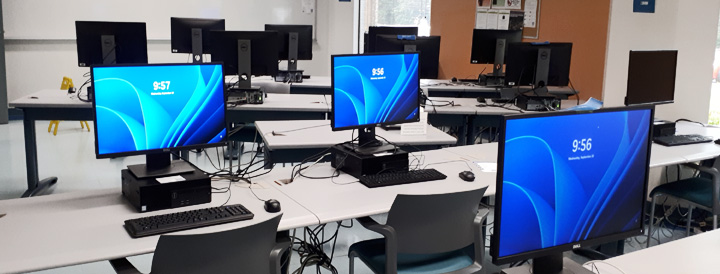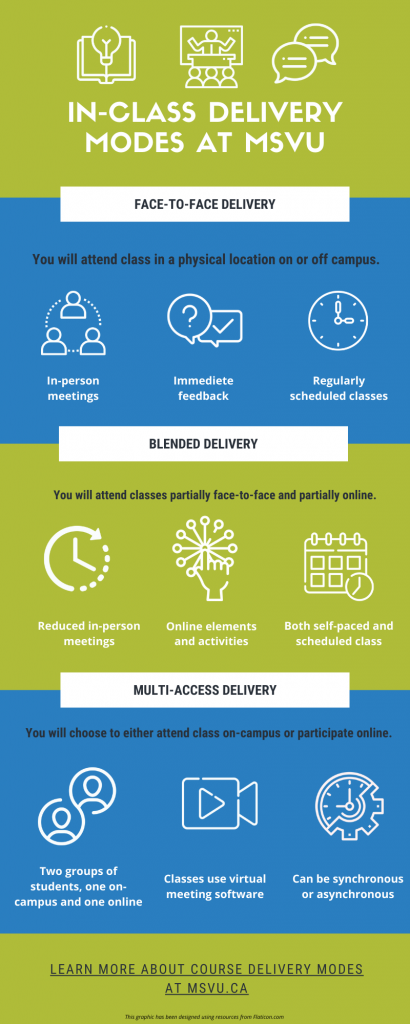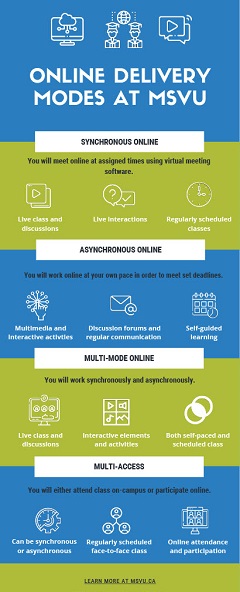MSVU offers courses using a variety of course delivery modes that incorporate educational technology and online resources to enhance access and learning for all students.
Course delivery modes are being updated as required by the Maritime Provinces Higher Education Commission. By 2026, all universities in Atlantic Canada will use the same terminology for different types of course delivery modes.
At MSVU, we will continue to offer the same six delivery modes that we have had in the past. Some of them will simply be referred to by a new name. The transition to these updated course delivery mode names will occur over the next year in a phased approach and will be fully implemented by the start of the 2024-2025 academic year.
Below are the updated names and definitions of the existing course delivery modes. Where relevant, old names are in brackets.
In-Person (Face-to Face)
Instruction takes place in an in-person setting at an assigned day/time and location. Scheduled courses are delivered in a physical location on or off campus. The course instructor may use a variety of educational technologies to varying degrees.
Hybrid (Blended)
Instruction is a blend of in-person and online (synchronous and/or asynchronous). Scheduled courses have a single group of students that meet in-person at a specific location at a reduced number of assigned days/times. The course instructor will communicate expectations for additional online learning which may or may not be in real time.
Synchronous Online
Instruction takes place in real-time online using virtual meeting software. Scheduled courses require student presence online at assigned days/times. The course instructor will communicate expectations for online engagement.
Asynchronous Online
Instruction is self-guided and self-paced online. Courses do not have scheduled meetings but do have set deadlines. The course instructor will engage with students asynchronously online in a variety of ways.
Multi-Mode Online
Instruction is a blend of synchronous and asynchronous online learning. Scheduled courses have a single group of students that meet in real time using virtual meeting software at a reduced number of assigned days/times. The course instructor will communicate expectations for synchronous and asynchronous engagement.
Multi-Access
Instruction is available online and in-person. Scheduled courses have two groups of students, one in-person and one online. The course instructor will communicate expectations for in-person and online students.


